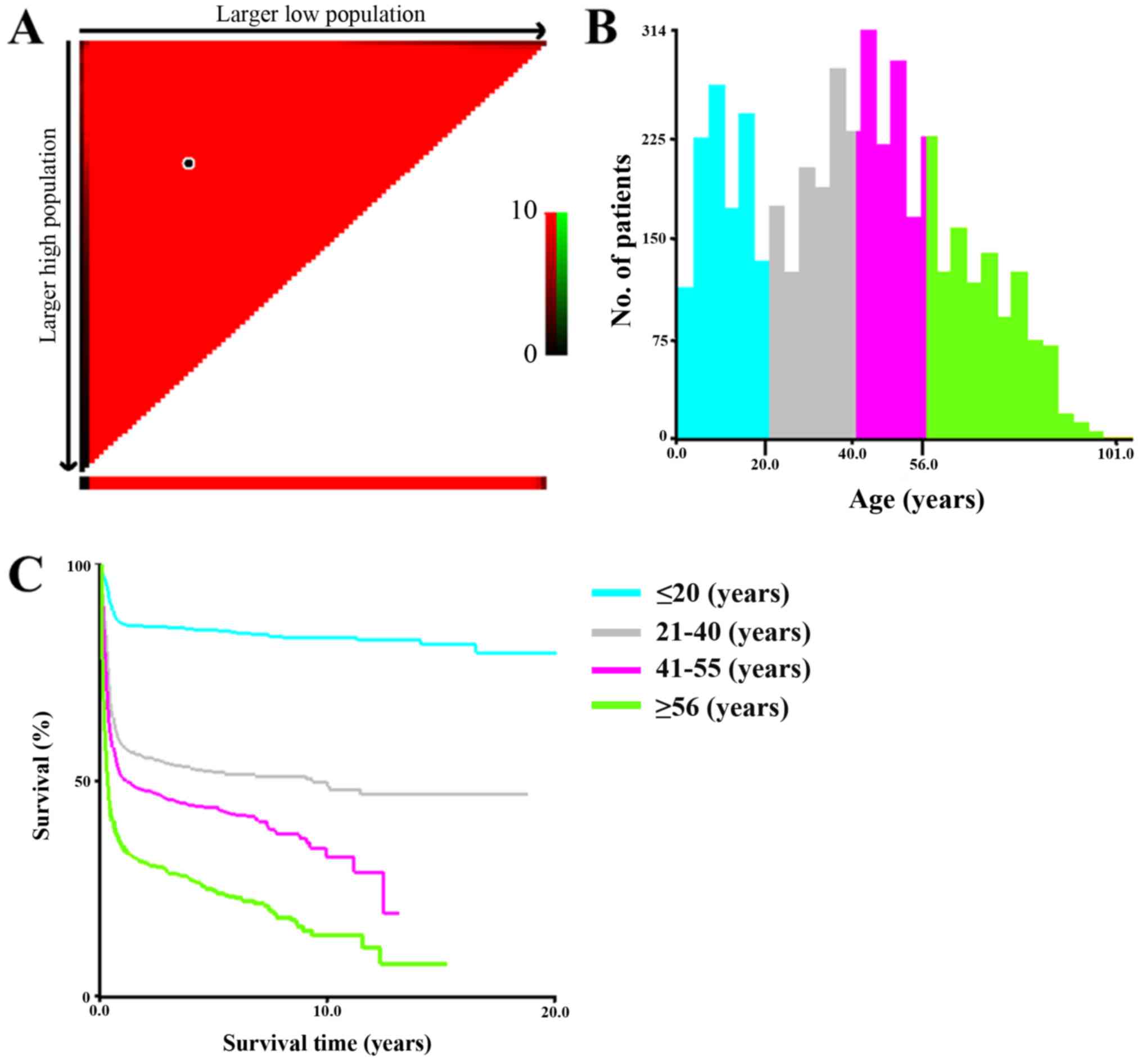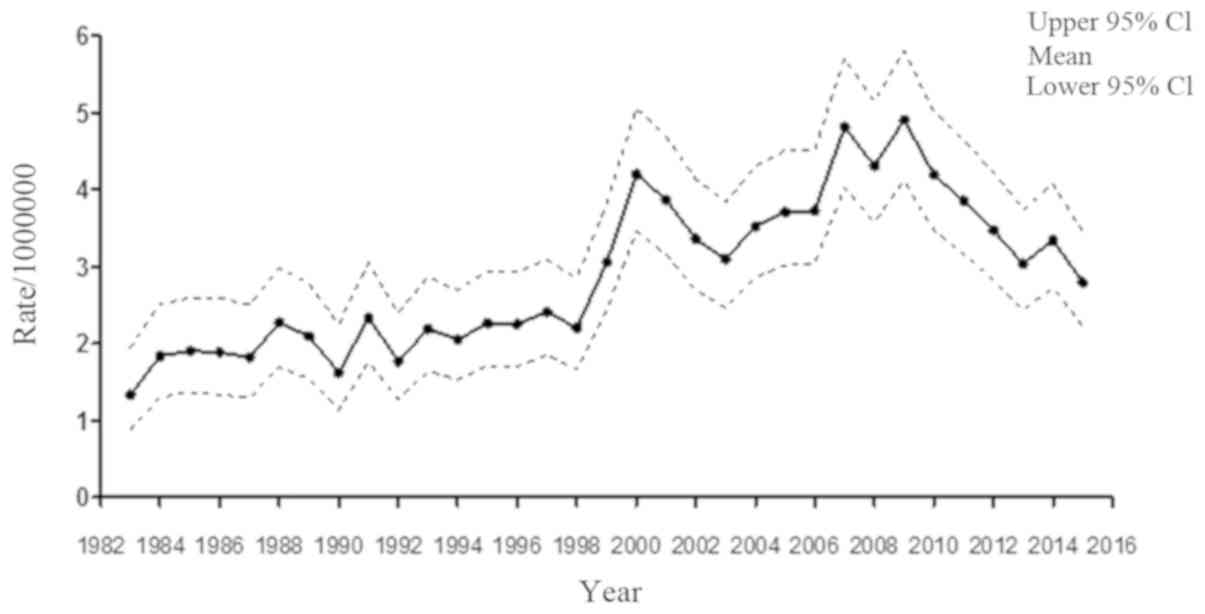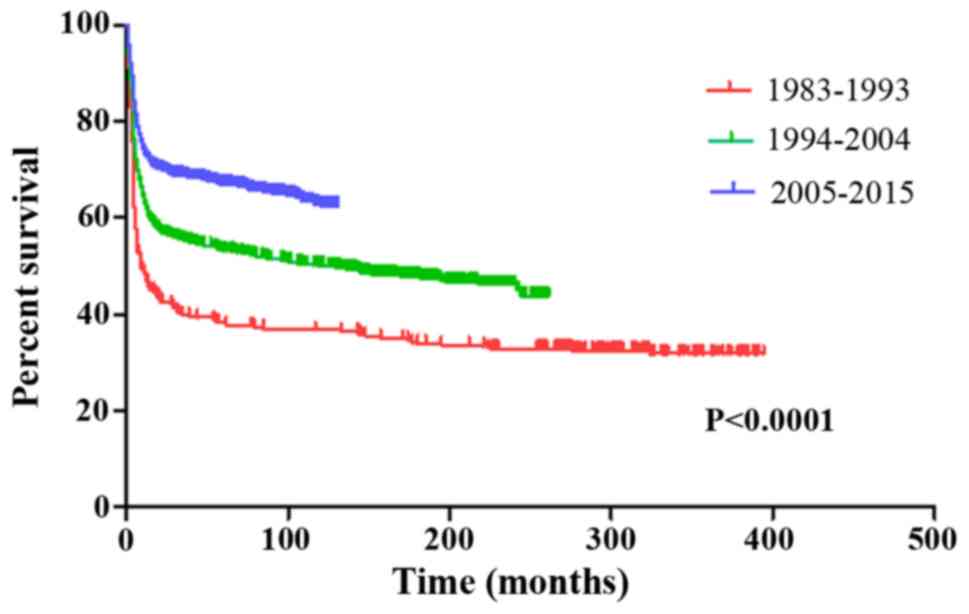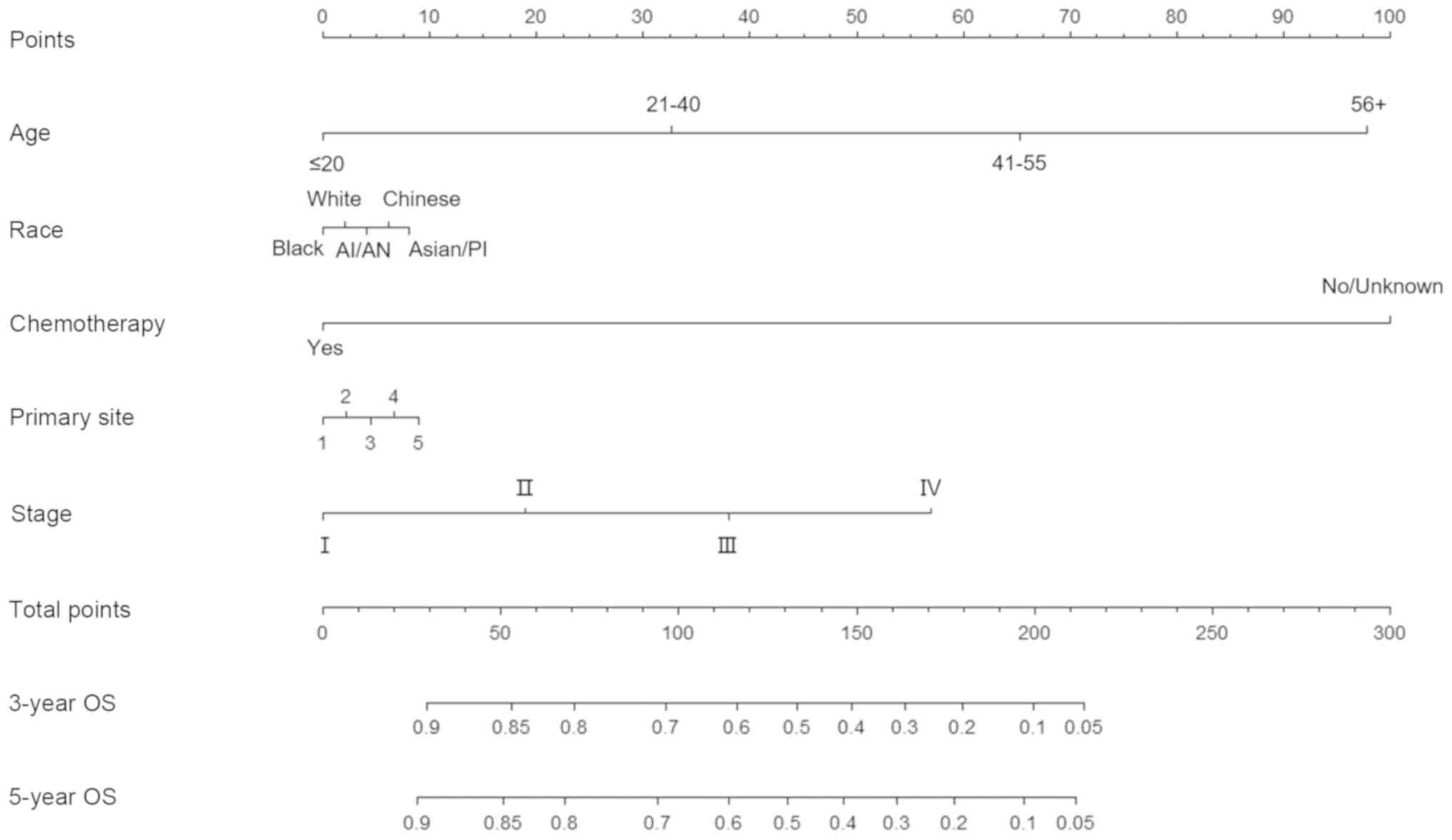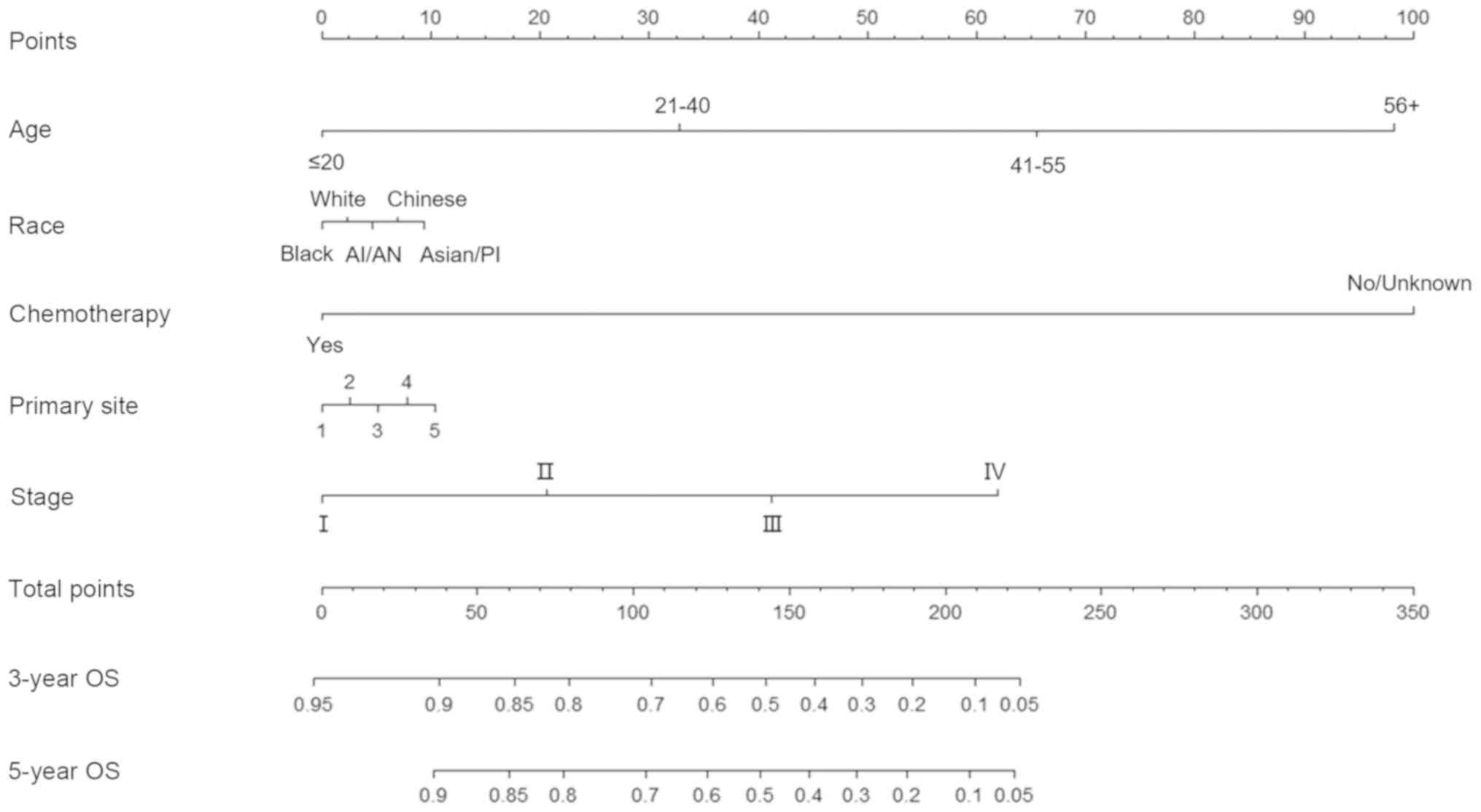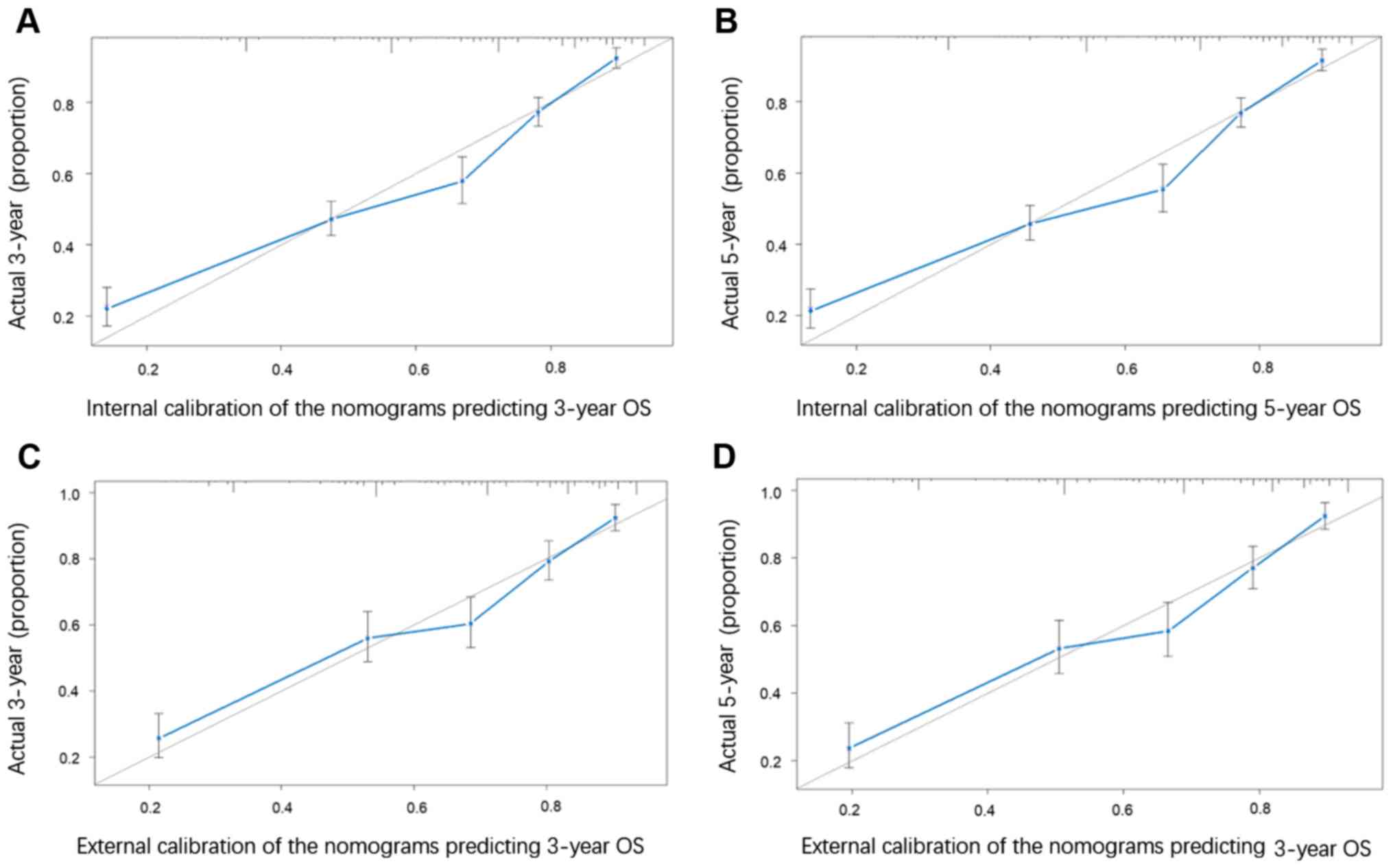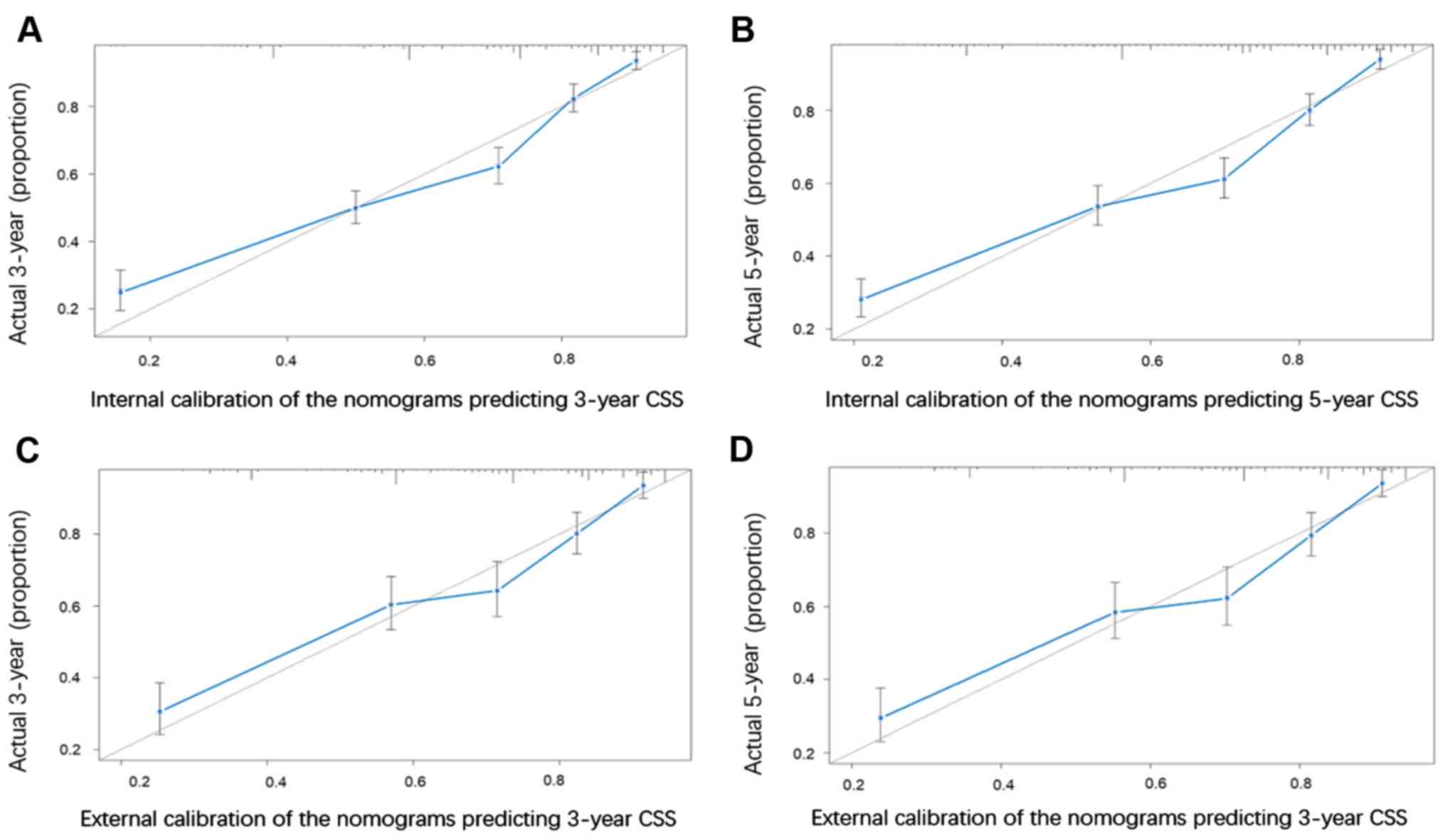|
1
|
Burkitt D: A sarcoma involving the jaws in
African children. Br J Surg. 46:218–223. 1958. View Article : Google Scholar : PubMed/NCBI
|
|
2
|
Magrath I: The pathogenesis of Burkitt's
lymphoma. Adv Cancer Res. 55:133–270. 1990. View Article : Google Scholar : PubMed/NCBI
|
|
3
|
Bellan C, Lazzi S, Hummel M, Palummo N, de
Santi M, Amato T, Nyagol J, Sabattini E, Lazure T, Pileri SA, et
al: Immunoglobulin gene analysis reveals 2 distinct cells of origin
for EBV-positive and EBV-negative Burkitt lymphomas. Blood.
106:1031–1036. 2005. View Article : Google Scholar : PubMed/NCBI
|
|
4
|
Dozzo M, Carobolante F, Donisi PM,
Scattolin A, Maino E, Sancetta R, Viero P and Bassan R: Burkitt
lymphoma in adolescents and young adults: Management challenges.
Adolesc Health Med Ther. 8:11–29. 2016. View Article : Google Scholar : PubMed/NCBI
|
|
5
|
Costa LJ, Xavier AC, Wahlquist AE and Hill
EG: Trends in survival of patients with Burkitt lymphoma/leukemia
in the USA: An analysis of 3691 cases. Blood. 121:4861–4866. 2013.
View Article : Google Scholar : PubMed/NCBI
|
|
6
|
Castillo JJ, Winer ES and Olszewski AJ:
Population-based prognostic factors for survival in patients with
Burkitt lymphoma: An analysis from the surveillance, epidemiology,
and end results database. Cancer. 119:3672–3679. 2013. View Article : Google Scholar : PubMed/NCBI
|
|
7
|
Iasonos A, Schrag D, Raj GV and Panageas
KS: How to build and interpret a nomogram for cancer prognosis. J
Clin Oncol. 26:1364–1370. 2008. View Article : Google Scholar : PubMed/NCBI
|
|
8
|
Kattan MW, Leung DH and Brennan MF:
Postoperative nomogram for 12-year sarcoma-specific death. J Clin
Oncol. 20:791–796. 2002. View Article : Google Scholar : PubMed/NCBI
|
|
9
|
International Bladder Cancer Nomogram
Consortium, ; Bochner BH, Kattan MW and Vora KC: Postoperative
nomogram predicting risk of recurrence after radical cystectomy for
bladder cancer. J Clin Oncol. 24:3967–3972. 2006. View Article : Google Scholar : PubMed/NCBI
|
|
10
|
Touijer K and Scardino PT: Nomograms for
staging, prognosis, and predicting treatment outcomes. Cancer. 115
(Suppl 13):S3107–S3111. 2009. View Article : Google Scholar
|
|
11
|
Camp RL, Dolled-Filhart M and Rimm DL:
X-tile: A new bio-informatics tool for biomarker assessment and
outcome-based cut-point optimization. Clin Cancer Res.
10:7252–7259. 2004. View Article : Google Scholar : PubMed/NCBI
|
|
12
|
Dickman PW and Adami HO: Interpreting
trends in cancer patient survival. J Intern Med. 260:103–117. 2006.
View Article : Google Scholar : PubMed/NCBI
|
|
13
|
Pencina MJ and D'Agostino RB: Overall C as
a measure of discrimination in survival analysis: Model specific
population value and confidence interval estimation. Stat Med.
23:2109–2123. 2004. View
Article : Google Scholar : PubMed/NCBI
|
|
14
|
Hesseling PB, Kouya F, Katayi E, Mbah G
and Wharin P: Burkitt's lymphoma: The prevalence of HIV/AIDS and
the outcome of treatment. S Afr Med J. 108:84–85. 2018. View Article : Google Scholar : PubMed/NCBI
|
|
15
|
Pees HW, Radtke H, Schwamborn J and Graf
N: The BFM-protocol for HIV-negative Burkitt's lymphomas and L3 ALL
in adult patients: A high chance for cure. Ann Hematol. 65:201–205.
1992. View Article : Google Scholar : PubMed/NCBI
|
|
16
|
Soussain C, Patte C, Ostronoff M, Delmer
A, Rigal-Huguet F, Cambier N, Leprisé PY, François S, Cony-Makhoul
P, Harousseau JL, et al: Small noncleaved cell lymphoma and
leukemia in adults. A retrospective study of 65 adults treated with
the LMB pediatric protocols. Blood. 85:664–674. 1995. View Article : Google Scholar : PubMed/NCBI
|
|
17
|
Magrath I, Adde M, Shad A, Venzon D,
Seibel N, Gootenberg J, Neely J, Arndt C, Nieder M, Jaffe E, et al:
Adults and children with small non-cleaved-cell lymphoma have a
similar excellent outcome when treated with the same chemotherapy
regimen. J Clin Oncol. 14:925–934. 1996. View Article : Google Scholar : PubMed/NCBI
|
|
18
|
Rizzieri DA, Johnson JL, Niedzwiecki D,
Lee EJ, Vardiman JW, Powell BL, Barcos M, Bloomfield CD, Schiffer
CA, Peterson BA, et al: Intensive chemotherapy with and without
cranial radiation for Burkitt leukemia and lymphoma: Final results
of cancer and leukemia group B study 9251. Cancer. 100:1438–1448.
2004. View Article : Google Scholar : PubMed/NCBI
|
|
19
|
Lacasce A, Howard O, Lib S, Fisher D, Weng
A, Neuberg D and Shipp M: Modified magrath regimens for adults with
Burkitt and Burkitt-like lymphomas: Preserved efficacy with
decreased toxicity. Leuk Lymphoma. 45:761–767. 2004. View Article : Google Scholar : PubMed/NCBI
|
|
20
|
Smeland S, Blystad AK, Kvaløy SO, Ikonomou
IM, Delabie J, Kvalheim G, Hammerstrøm J, Lauritzsen GF and Holte
H: Treatment of Burkitt's/Burkitt-like lymphoma in adolescents and
adults: A 20-year experience from the Norwegian Radium Hospital
with the use of three successive regimens. Ann Oncol. 15:1072–1078.
2004. View Article : Google Scholar : PubMed/NCBI
|
|
21
|
Di Nicola M, Carlo-Stella C, Mariotti J,
Devizzi L, Massimino M, Cabras A, Magni M, Matteucci P, Guidetti A,
Gandola L and Gianni AM: High response rate and manageable toxicity
with an intensive, short-term chemotherapy programme for Burkitt's
lymphoma in adults. Br J Haematol. 126:815–820. 2004. View Article : Google Scholar : PubMed/NCBI
|
|
22
|
Tauro S, Cochrane L, Lauritzsen GF, Baker
L, Delabie J, Roberts C, Mahendra P and Holte H: Dose-intensified
treatment of Burkitt lymphoma and B-cell lymphoma unclassifiable,
(with features intermediate between diffuse large B-cell lymphoma
and Burkitt lymphoma) in young adults (<50 years): A comparison
of two adapted BFM protocols. Am J Hematol. 85:261–263. 2010.
View Article : Google Scholar : PubMed/NCBI
|
|
23
|
Patte C, Auperin A, Michon J, Behrendt H,
Leverger G, Frappaz D, Lutz P, Coze C, Perel Y, Raphaël M, et al:
The Société Française d'Oncologie Pédiatrique LMB89 protocol:
Highly effective multiagent chemotherapy tailored to the tumor
burden and initial response in 561 unselected children with B-cell
lymphomas and L3 leukemia. Blood. 97:3370–3379. 2001. View Article : Google Scholar : PubMed/NCBI
|
|
24
|
Gerrard M, Cairo MS, Weston C, Auperin A,
Pinkerton R, Lambilliote A, Sposto R, McCarthy K, Lacombe MJ,
Perkins SL, et al: Excellent survival following two courses of
COPAD chemotherapy in children and adolescents with resected
localized B-cell non-Hodgkin's lymphoma: Results of the FAB/LMB 96
international study. Br J Haematol. 141:840–847. 2008. View Article : Google Scholar : PubMed/NCBI
|
|
25
|
Thomas DA, Faderl S, O'Brien S,
Bueso-Ramos C, Cortes J, Garcia-Manero G, Giles FJ, Verstovsek S,
Wierda WG, Pierce SA, et al: Chemoimmunotherapy with hyper-CVAD
plus rituximab for the treatment of adult Burkitt and Burkitt-type
lymphoma or acute lymphoblastic leukemia. Cancer. 106:1569–1580.
2006. View Article : Google Scholar : PubMed/NCBI
|
|
26
|
Corazzelli G, Frigeri F, Russo F, Frairia
C, Arcamone M, Esposito G, De Chiara A, Morelli E, Capobianco G,
Becchimanzi C, et al: RD-CODOX-M/IVAC with rituximab and
intrathecal liposomal cytarabine in adult Burkitt lymphoma and
‘unclassifiable’ highly aggressive B-cell lymphoma. Br J Haematol.
156:234–244. 2012. View Article : Google Scholar : PubMed/NCBI
|
|
27
|
Todeschini G, Bonifacio M, Tecchio C,
Balter R, Carli G, Stefani PM, Adami F, Zamò A, Dei Tos AP, Marino
F, et al: Intensive short-term chemotherapy regimen induces high
remission rate (over 90%) and event-free survival both in children
and adult patients with advanced sporadic Burkitt
lymphoma/leukemia. Am J Hematol. 87:22–25. 2012. View Article : Google Scholar : PubMed/NCBI
|
|
28
|
Mead GM, Sydes MR, Walewski J, Grigg A,
Hatton CS, Pescosta N, Guarnaccia C, Lewis MS, McKendrick J,
Stenning SP, et al: An international evaluation of CODOX-M and
CODOX-M alternating with IVAC in adult Burkitt's lymphoma: Results
of United Kingdom Lymphoma Group LY06 study. Ann Oncol.
13:1264–1274. 2002. View Article : Google Scholar : PubMed/NCBI
|
|
29
|
Thomas DA, Cortes J, O'Brien S, Pierce S,
Faderl S, Albitar M, Hagemeister FB, Cabanillas FF, Murphy S,
Keating MJ and Kantarjian H: Hyper-CVAD program in Burkitt's-type
adult acute lymphoblastic leukemia. J Clin Oncol. 17:2461–2470.
1999. View Article : Google Scholar : PubMed/NCBI
|
|
30
|
Lopez TM, Hagemeister FB, McLaughlin P,
Velasquez WS, Swan F, Redman JR, Rodriguez MA, Tucker SL,
Silvermintz K, Johnson J, et al: Small noncleaved cell lymphoma in
adults: Superior results for stages I–III disease. J Clin Oncol.
8:615–622. 1990. View Article : Google Scholar : PubMed/NCBI
|
|
31
|
Diviné M, Lepage E, Brière J, Pautier P,
Dupriez B, Lederlin P, Mineur P, Tilly H, Blanc M, Audhuy B, et al:
Is the small non-cleaved-cell lymphoma histologic subtype a poor
prognostic factor in adult patients? A case-controlled analysis.
The Groupe d'Etude des Lymphomes de l'Adulte. J Clin Oncol.
14:240–248. 1996. View Article : Google Scholar : PubMed/NCBI
|
|
32
|
Wang G, Chang Y, Wu X, Li X, Li L, Zhang
L, Fu X, Sun Z, Zhang X and Zhang M: Clinical features and
prognostic factors of primary bone marrow lymphoma. Cancer Manag
Res. 11:2553–2563. 2019. View Article : Google Scholar : PubMed/NCBI
|
|
33
|
Korfel A and Schlegel U: Diagnosis and
treatment of primary CNS lymphoma. Nat Rev Neurol. 9:317–327. 2013.
View Article : Google Scholar : PubMed/NCBI
|















